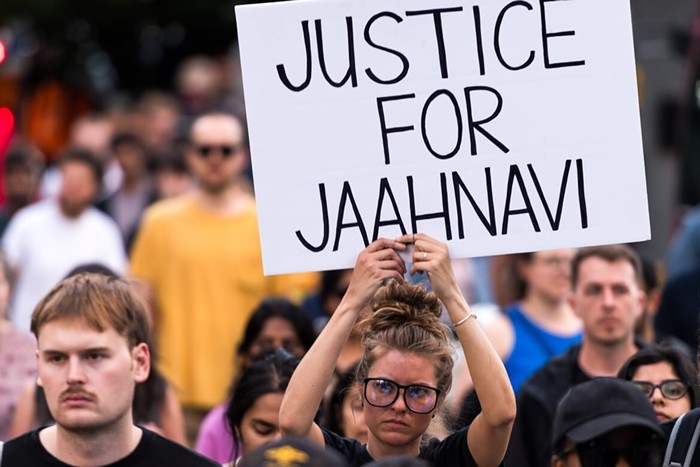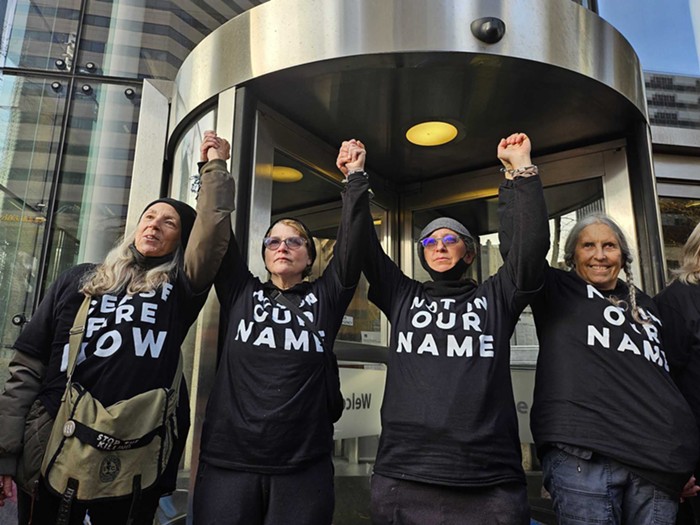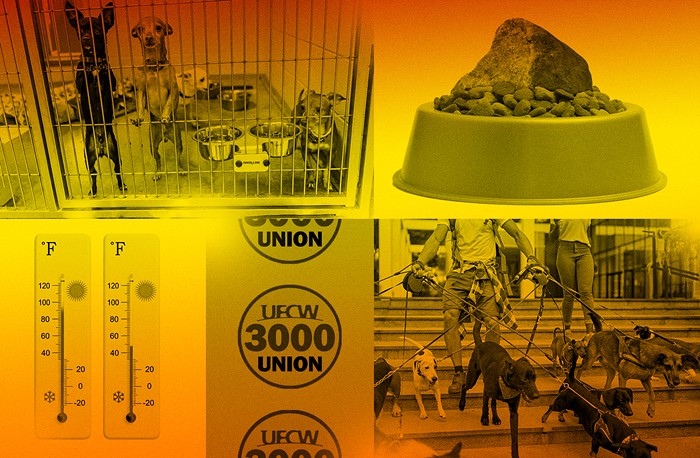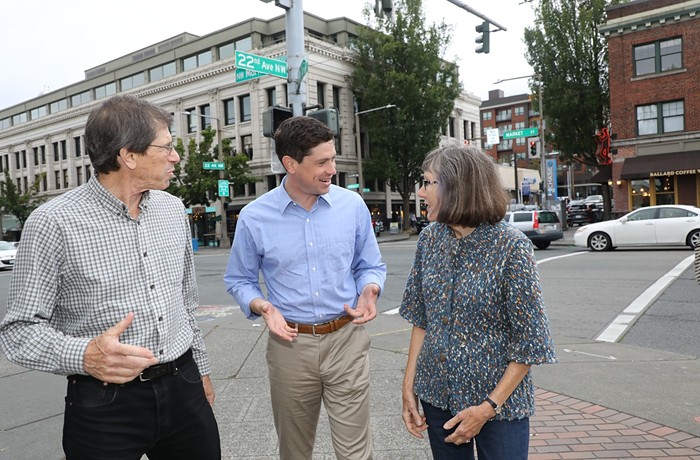
Velocity Dance Center's new leadership team spent 2020 grieving the loss of contact and trying to navigate a future for dance that exists outside the realm of touch and physical space. Some of those changes could become permanent since Velocity announced earlier this month that it moved out of its Capitol Hill home of nearly 25 years. However, a new city effort to secure real estate for art space could be Velocity's saving grace.
Before the pandemic, Velocity, a non-profit, was already operating tenuously. The group says half of its income came from renting out its space and the other half from donations. Last winter, Velocity hosted a fundraising campaign to fill gaps in its budget. Once the pandemic hit, Interim Managing Director and co-Art Director Erin Johnson said, Velocity lost 50% of its budget "right off the bat."
Velocity's last in-person show was in January. Since then, Johnson, Co-Art Director Fox Whitney, and Communications Manager Vladimir Kremenović have pivoted to modify existing programming for the Zoom era. They're focusing on creating original, completely-virtual experiences that still connect Velocity's dance community with resources and audiences.
Can they continue to do that without a studio? I did a little Zoom interview with Johnson, Whitney, and Kremenović to talk about Velocity's pandemic evolution and what's next for the dance center.
We pruned this interview for clarity.
How has Velocity changed during the pandemic?
EJ: Velocity was started 25 years ago by artists as a space for experimentation, dance, and movement arts, and our mission is to serve artists specifically in that work. Our space was a big part of benefiting artists and connecting them to resources. During the pandemic, Velocity wasn't about the space in the sense of "I need the dance studio" but "I need the platform to make connections." That's how people have been using our space.
FW: Artist and faculty pivoted. Our summer festival all became virtual and we were all nervous. Erin brought the faculty in and talked to us like, 'Do we want to do this? What kind of resources do we have to share?'
EJ: We hosted 140 classes and intensives. Some were on Zoom, there was an audio series for when people were walking around their neighborhood, we used Facebook groups and podcasts, there was a call-in service where people called in and had a meditative experience. Artists were really innovating within the form. We had over 1,000 individual participants and 45 teachers. We instituted a BIPOC scholarship program where anyone could opt-in and we gave away $14,000 worth of classes.
VK: There's something about human memory that gets us to fixate on the brick and mortar structure. In the end, the building is really just a building, the room is just a room. We can still continue to hold space even without a room.
Is the participation you see in your events similar to non-pandemic participation?
EJ: We had about the same amount of classes and intensives, but we generally have more audience participation, and that’s because dance is an in-person form. But, we really did expand how many artists we worked with.
FW: The barrier between the city, state, and nation kind of disintegrated.
VK: I participated in one online show with nine dancers in isolation from a bunch of different West Coast and Pacific Northwest organizations, Serbia, Bosnia, and Croatia. Over 3,000 people tuned in over two days. That never would have been possible before.

How will not having a dance studio impact virtual work going forward? Were you using the studio much this year?
VK: Some people had been going into the studio and rehearsing because, while some teachers could teach from home, some weren't able to. We set up these streaming stations in the studio with a computer, camera, speaker, all the necessities that you needed to conduct a successful online class. The rehearsal and teaching space are the things we can’t provide anymore, but we're trying to find ways through organization partnerships to get space for teachers that need that space.
Would Velocity be able to benefit from the new Cultural Space Agency (CSA), which will help secure spaces in new buildings for the Seattle arts community?
EJ: We’ve been a part of the artist organizations that have been having deep conversations about space sharing in the city for a long time. Velocity will eventually need to find a new home, and we’re taking our time. We’re not going to rush this process. We want to have that plan for sustainability, and the CSA might be the way that we do that. I don’t want to put any visible pressure on the CSA because we all have dreams about what a dream Velocity would be, but I know we will only get there through partnership. Velocity can’t do it alone. Initiatives like this one allow us to coalition-build and to find resources and find places where we can intersect and push forward.
On the CSA working with Velocity: I asked Seattle's Office of Arts and Culture if Velocity could be a good fit for the CSA. Erika Lindsay, the OAC's communication manager, said "we are already in preliminary conversation with leadership at Velocity about options and opportunities," and that "this is exactly the kind of hunt for appropriate space that the Space Agency will be engaging in."
However, Lindsay said CSA decisions will be made by the "Constituency, a 50-person group of BIPOC leaders from the worlds of arts and culture, community development, commercial real estate, philanthropy, and finance." That group will be "the primary point of contact to the cultural community, ambassadors for the opportunities that the Cultural Space Agency creates," Lindsay said. The city is still finalizing the processes for the Constituency, though, so it'll be at least several months before any arts organization receives new space through the CSA.
What does the virtual future hold?
FW: Currently, online classes. We're getting some new teachers working on those. Classes slowed down in the fall, but winter is picking up. I’m having people in classes that aren’t even in the state. As for programming, we're looking to the summer festivals and partnering with The Henry, and working with Gay City Arts on ways we can work together.
EJ: We've done long-term planning with artists for 2022 and 2023 on projects that are in-person performances that we've shuffled down the road a little. We have fun things coming out where people are trying to put things on in outdoor public space, things that were on a stage will now be in the center of a city square. People are thinking about space differently.
This Slog post is part of State of the Arts, a new series that looks at the ways Seattle's arts communities are dealing with our darkest winter. Check Slog daily for fresh updates.



















